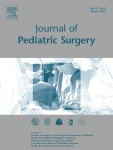Mixa V, Skába R, Kraus J, Cvachovec K. J Pediatr Surg. 2011 Nov;46(11):2135–9. IF: 1.308

Department of Anaesthesiology and ICM
Abstract
BACKGROUND AND PURPOSE: Stimulation electromyography (sEMG) is useful in identifying the sphincter muscle (M) in patients with anorectalmalformations (ARMs). This study evaluates the effect of anesthetic agents and M relaxants on sEMG findings. MATERIALS AND METHODS: Seventeen infants (10 boys and 7 girls) with a mean age of 6.3 months and mean body weight of 6.7 kg were included in a prospective randomized study. Anesthesia was induced by sevoflurane and opioids, and an epidural catheter was inserted caudally. Stimulation electromyography of levator ani M using 14 mA current was used, and latency and amplitude of the evoked compound M action potential (CMAP) were recorded. Patients were randomized into 2 groups. Group A received a local anesthetic epidurally, and sEMG was performed. Administration of the M relaxant and measurement of M response followed. In group B drug administration, sEMG and response measurement were performed after administration of M relaxant. RESULTS: Baseline CMAP was recorded in all patients. Average latency was 4.1 milliseconds, and average amplitude was 0.43 mV. In group A, the average latency was 4.0 milliseconds, and average amplitude was 0.65 mV. After administration of the M relaxant, the CMAP disappeared. In group B, no CMAP was observed immediately after administration of the M relaxant. CONCLUSION: Administration of the inhalational anesthetic, opioids, and local anesthetic did not influence the M response of M fibers in the levator ani M on sEMG and enables its localization during ARM reconstruction. Nondepolarizing M relaxation completely abolished the response. If M relaxant is necessary, cisatracurium is used. The most suitable method of anesthesia for ARM surgery appears to be inhalational anesthesiasupplemented by opioids and epidural analgesia.
-mk-